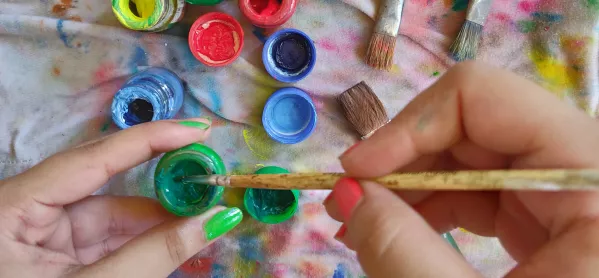Classroom displays: a nuisance or a vital part of an effective learning environment?
There was a time you’d have found me firmly in the camp of the latter. I once spent more than 20 hours creating a range of interactive displays, complete with plant pots stapled to the wall, full of learning challenges, placed neatly beside a set of hats, so as to engage students in the process of thinking.
Frankly, what was I thinking?
In more recent times, I’ve come to question the time and opportunity cost of displays. Considering the hours of expert time going into classroom decor, how much of it positively impacts on children’s learning? Very little, I think now.
Covid and schools: Forgoing classroom displays
Over the course of this past year, as schools have adapted to Covid guidelines, lots of teachers, myself included, have found themselves teaching in classrooms dotted all over the school. In a secondary school, this is a big change from the safety and comfort of “your classroom”.
Recently, as I found myself somewhat distracted by a maths display that I didn’t understand, it led me to question how much displays really help children to learn. (Not that maths display, of course - I’m sure it’s great maths.) I began to wonder whether anything has been lost from our own teaching by not having our own displays on the walls around us.
In all honesty, I have to admit that there hasn’t been much of a change at all in students’ learning. At this point, I’m sure geography teachers across the county will be lining up to tell me about how they miss their maps, like a vital part of their teaching repertoire has been cruelly removed from them. And I agree - some displays are there to enhance the means of delivery.
But do classroom displays really warrant the time and effort that teachers put in? I’d suggest not.
The best use of teacher time?
Imagine you spent five hours over the course of a week bejewelling your walls in all manner of creative ways. You might enjoy that, if that’s what floats your boat. But is that the best use of five hours of teacher time?
What else could you be doing with that time? You could be enhancing your subject knowledge. You could be improving your curriculum. You could be reading students’ work and planning responsive lessons. You could even be working with students themselves. All of these things, to me at least, seem like a far more impactful use of our time.
It’s not that displays are inherently bad. In a utopian world where austerity in schools wasn’t the harsh reality that it is today, it would be lovely to have a team of admin staff to create beautiful learning environments.
This utopian world does not exist, sadly. We have to make choices about how best we deploy the resources and time that we do have at our disposal. We have to make choices about the “best bets”: the things that we choose to invest our time in.
And that needs to be learning, and the children themselves, not the walls around them.
Amy Forrester is an English teacher and director of pastoral care (key stage 4) at Cockermouth School in Cumbria. The views expressed are her own, and not necessarily those of her employer




